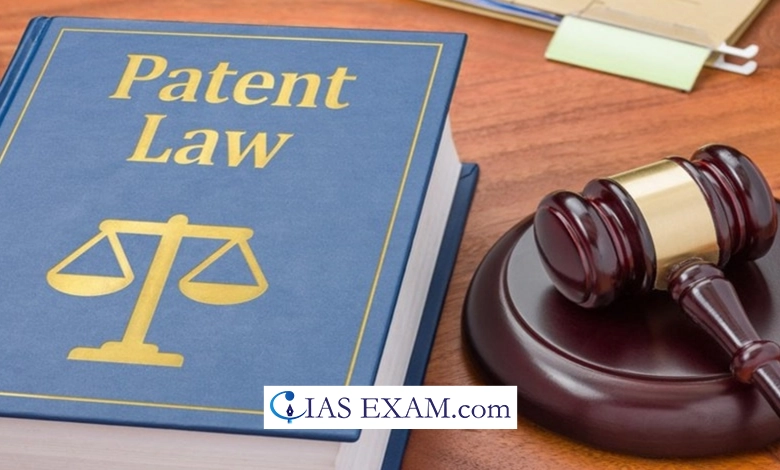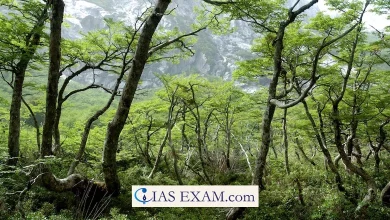
Context
The recently introduced amendments to the rules governing India’s Patent Act has gained widespread criticism.
Key Highlights
- The Ministry of Commerce and Industry notified the Patents (Amendment) Rules, 2024.
- The amended rules aim to introduce widespread modifications to align with international standards, promote innovations among innovators, and protect their rights.
- The amendments target key areas of situation in the Indian Patent exercise and techniques and are poised to stimulate an increase in patent submitting and processing in the state.
What is a patent?
- A patent is an exclusive right granted for an invention, that’s a product or a system that provides, in general, a new way of doing something, or offers a new technical solution to a problem.
- To get a patent, technical records about the discovery should be disclosed to the public in a patent application.
India’s patent regime
- Indian patents are ruled by the Indian Patent Act of 1970. Under the act, patents are granted if the discovery fulfills the following standards:
- It have to be novel
- It have to have imaginative step/s or it have to be non-obvious
- It should be capable of Industrial application
- It need not appeal to the provisions of sections 3 and four of the Patents Act 1970.
- Alignment with international regimes: It became a party to the Trade-Related Aspects of Intellectual Property Rights (TRIPS) Agreement following its membership to the World Trade Organisation on January 1, 1995.
- It amended its internal patent laws to comply with TRIPS, most notably in 2005, when it added pharmaceutical product patents into the rules.
- The authentic Indian Patents Act did not provide patent protection to pharmaceutical products to ensure that medicines were to be had to the masses at a low price.
- India is also a signatory to several IPR associated conventions along with:
- The Berne Convention which governs copyright,
- The Budapest Treaty,
- The Paris Convention for the Protection of Industrial Property
- The Patent Cooperation Treaty (PCT) all of which govern various patent-related subjects.
Features of the Revamped Rules
- Unique provision for New ‘Certificate of Inventorship’ has been brought to renowned the contribution of inventors within the patented invention.
- Grace period: Provision for claiming advantages of Grace length beneath phase 31 has been streamlined by means of incorporating new paperwork, i.E., Form 31.
- First examination record: Time limit to provide foreign utility submitting information in Form 8 has been changed from six months from the date of submitting of utility to three months from the date of issuance of first exam record.
- Statements of working: Frequency to document the statements of running of patents in Form 27 has been decreased from once in a financial year to once in every 3 financial years.
- The provision to condone delay in filing of such statements for a period up to 3 months upon a request in prescribed way has been incorporated.
- Renewal rate has been decreased by using 10% if paid earlier through digital mode for a duration of at least four years.
Criticism of the new guidelines
- Though the amendments carry India’s patent regulation “nearly in line” with those of the US, it underscores the serious results for affected persons and voluntary businesses that campaign on public health concerns.
- To accommodate the needs of the industrialized countries and to signal free alternate agreements, the authorities have withdrawn the provisions that overseas producers, in particular pharma businesses, have found difficult.
- There turned into no discussion in Parliament and no facts at the human beings consulted, nor any information supplied to justify the amendments, no matter the considerable nature of the amendments.
- Patient health companies who want to access the patent gadget for you to enhance access to life-saving medications, now require to pay good sized costs to report pre-provide oppositions. There had been no expenses in advance.
- Discretionary powers with the patent controller to decide who may also document pre-furnish oppositions runs counter to previous judicial decisions, which unambiguously accredited both groups and individuals to submit pre-furnish oppositions.
- The Indian Patent Office faces a glut of patent applications, straining its capacity to deal with the workload successfully.
Way Ahead
- India is regarded as the drugstore of the sector and has turned out to be the most populous country. Hence it is even more imperative for the authorities to ensure outstanding medicines continue to be inside reach and economically possible for the sizeable segments of the population.
- The amendments are expected to negatively impact the availability and accessibility of medicines. They might additionally inspire monopolies and profiteering by big pharma.
- So the authorities ought to rethink the proposed amendments to shield the accessibility of low priced drugs and eliminate the ones suggested provisions which gain the huge global pharma industry.
Source: The Down to Earth
UPSC Mains Practice Question
Q.Bringing out the circumstances in 2005 which forced an amendment to section 3(d) in Indian Patent Law, 1970, discuss how it has been utilized by the Supreme Court in its judgement in rejecting Novartis’ patent application for ‘Glivec’. Discuss briefly the pros and cons of the decision. (2013)





.png)



